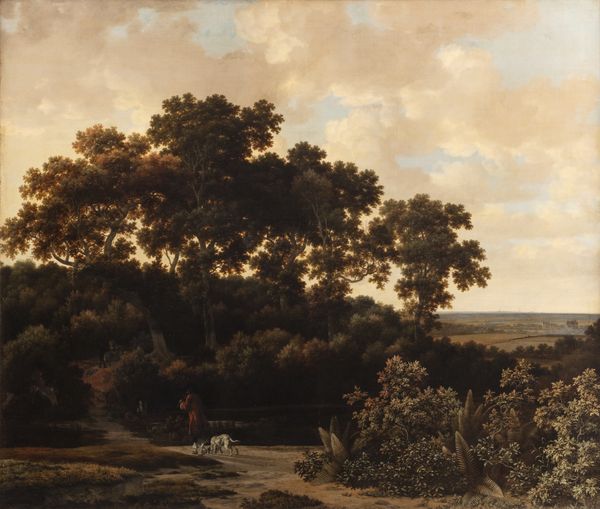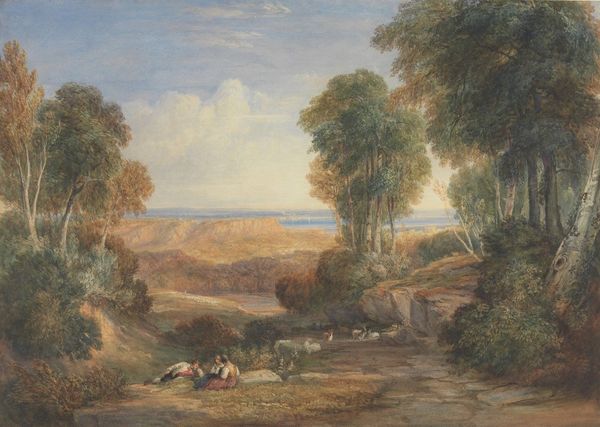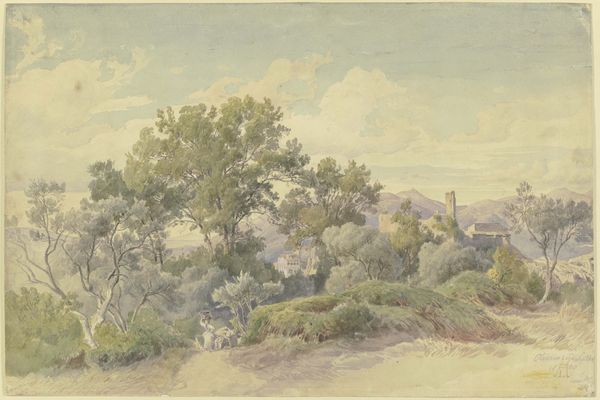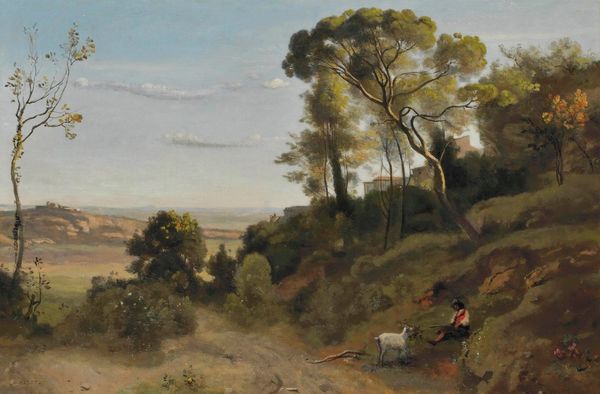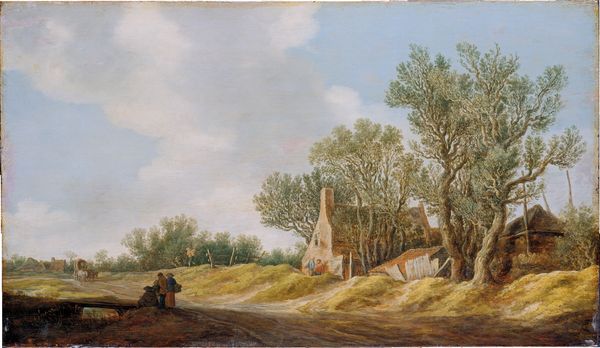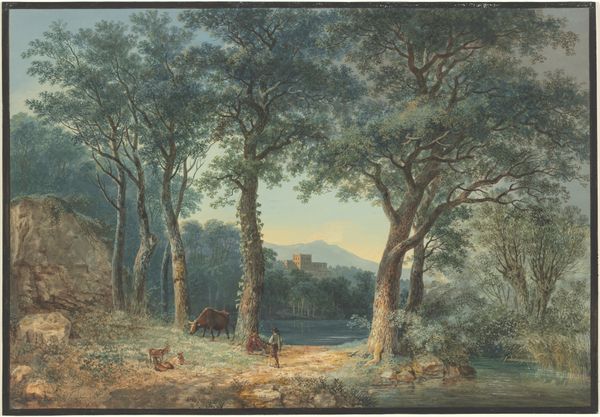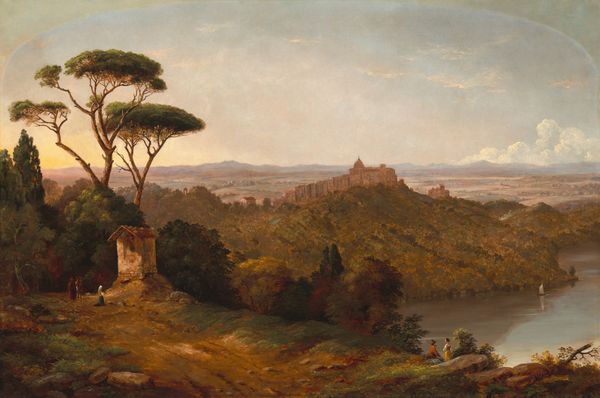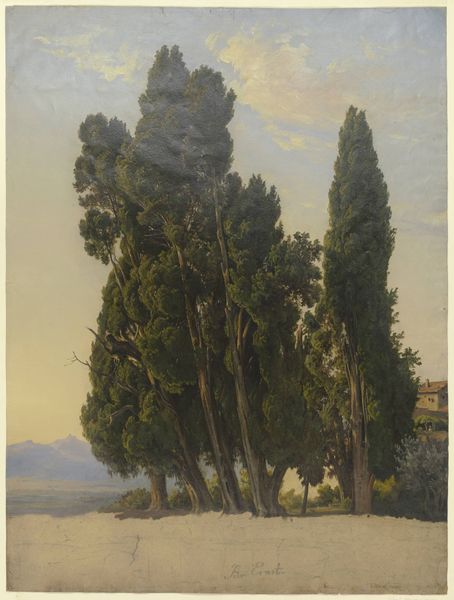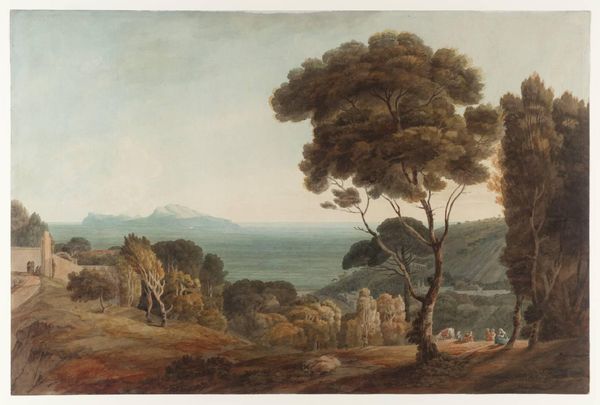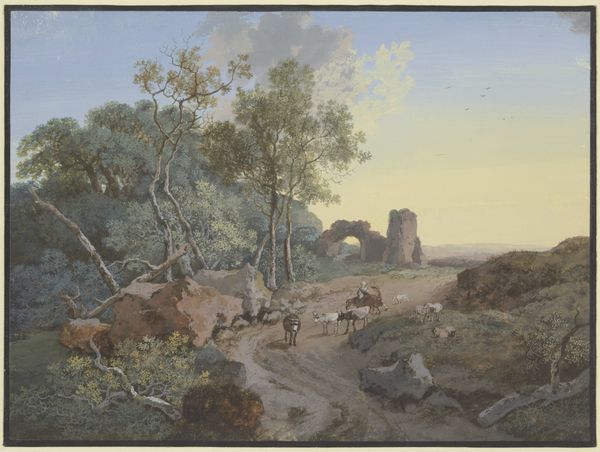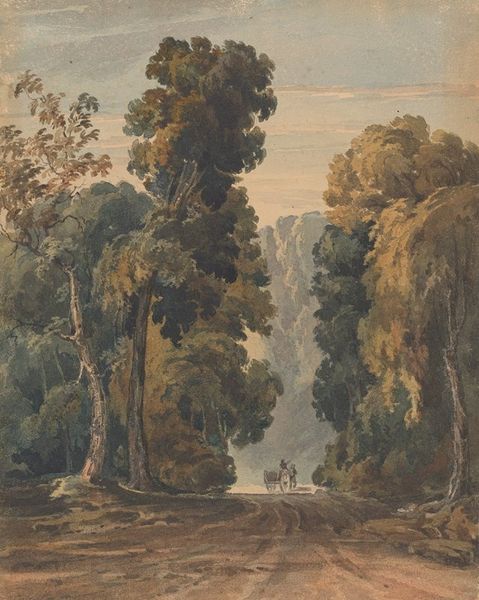
tempera, plein-air, oil-paint, canvas
#
tempera
#
plein-air
#
oil-paint
#
landscape
#
oil painting
#
canvas
#
underpainting
#
romanticism
#
cityscape
#
history-painting
#
academic-art
#
realism
Dimensions: 63 cm (height) x 88.5 cm (width) (Netto), 81.3 cm (height) x 106.4 cm (width) x 8.3 cm (depth) (Brutto)
Curator: We are looking at Fritz Petzholdt’s “A View from Hadrian's Villa, Tivoli,” completed in 1832. The oil on canvas, found at the Statens Museum for Kunst, captures a landscape imbued with a unique sense of peace. Editor: The initial impression is serene—almost ethereally so. There is a very structured tripartite division of foreground, middle ground, and sky; it’s classical in its order. Curator: Yes, the composition certainly supports that observation. The ruins, almost obscured by foliage, speak volumes about time and decay. They are potent symbols of vanished empire, framed by the very persistence of nature. Editor: Precisely. These classical ruins function almost as a memento mori—a reminder of mortality amidst the vibrant greens of the present landscape. Even the animals, they represent a sense of timeless, pastoral existence, starkly contrasting with the ruins representing civilization and history. The crumbling architecture really serves as a kind of picturesque anchor for that symbol. Curator: Petzholdt’s application of light is masterful. Notice the graduated tonality, subtly articulating forms and drawing the eye through the composition. The canvas also uses this contrast between the hard lines of classical architecture and soft shadows in nature, achieving visual interest. Editor: I agree, the diffused, almost hazy quality enhances the dreamlike aura. Symbolically, the haziness veils both the clarity of the classical past and what lies in the undefined future, which mirrors a collective and deeply felt, yet obscured memory. Curator: The technique demonstrates the principles of plein-air painting, striving to capture an authentic atmospheric quality—what would you make of his specific handling of realism within romanticism? Editor: That intermingling is, I believe, what makes the picture so resonant. It marries the immediate sensation of nature, captured through observation, with the broader, almost yearning quality typical of romantic sentiment. Overall, this exploration and contrast lends depth and continued contemplation to this artwork. Curator: It is a powerful commentary on the ephemerality of human constructs and the lasting presence of nature—one that rewards repeated viewing. Editor: Indeed. The enduring power of symbols and a well structured canvas converge, echoing the very essence of history and our relationship with time.
Comments
No comments
Be the first to comment and join the conversation on the ultimate creative platform.
